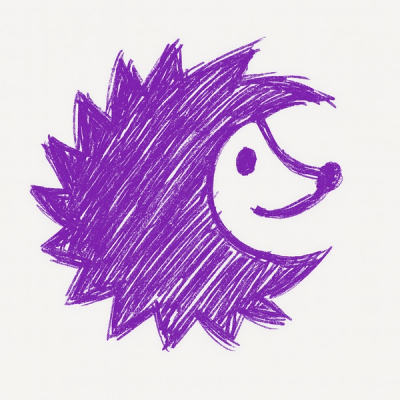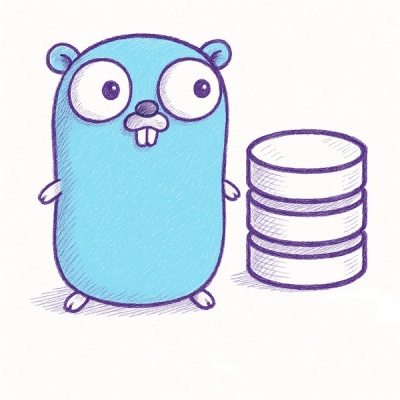
Security News
Browserslist-rs Gets Major Refactor, Cutting Binary Size by Over 1MB
Browserslist-rs now uses static data to reduce binary size by over 1MB, improving memory use and performance for Rust-based frontend tools.
flame-chart-js
Advanced tools
[](https://www.npmjs.com/package/flame-chart-js)
npm i flame-chart-js
https://pyatyispyatil.github.io/flame-chart-js
You can find some plans on the wiki
You can ignore any of the marks, data, or waterfall arguments to initialize only the items you want. The flame chart will automatically adjust and hide unused plugins.
import { FlameChart } from 'flame-chart-js';
const canvas = document.getElementById('canvas');
canvas.width = 800;
canvas.height = 400;
const flameChart = new FlameChart({
canvas, // mandatory
data: [
{
name: 'foo',
start: 300,
duration: 200,
type: 'task',
children: [
{
name: 'foo',
start: 310,
duration: 50,
type: 'sub-task',
color: '#AA0000',
},
],
},
],
marks: [
{
shortName: 'DCL',
fullName: 'DOMContentLoaded',
timestamp: 500,
},
],
waterfall: {
/* ... */
},
timeseries: [/* ... */],
timeframeTimeseries: [/* ... */],
colors: {
task: '#FFFFFF',
'sub-task': '#000000',
},
settings: {
hotkeys: {
active: true, // enable navigation using arrow keys
scrollSpeed: 0.5, // scroll speed (ArrowLeft, ArrowRight)
zoomSpeed: 0.001, // zoom speed (ArrowUp, ArrowDown, -, +)
fastMultiplayer: 5, // speed multiplier when zooming and scrolling (activated by Shift key)
},
options: {
tooltip: () => {
/*...*/
}, // see section "Custom Tooltip" below
timeUnits: 'ms',
},
styles: customStyles, // see section "Styles" below
},
});
flameChart.on('select', (node, type) => {
/*...*/
});
class FlameChart {
// set zoom, which start argument is a left bound and end argument is a right bound
setZoom = (start: number, end: number) => boolean
// set only position of the flame-chart
setFlameChartPosition = ({ x: number, y: number }) => void 0
// render all when animationFrame fired
render = () => void 0
// set new data for the flame-chart
setNodes = (nodes: FlameChartNodes) => void 0
// set marks for marks plugin
setMarks = (data: Marks) => void 0
// set chart data for timeseries plugin
setTimeseries = (data: Timeseries) => void 0
// resize canvas
resize = (width: number, height: number) => void 0
// apply new settings, which includes styles or something else
setSettings = (settings: Object) => void 0
// enable/disable navigation using arrow keys
hotkeys = (status: boolean) => void 0
}
import { FlameChartContainer, TimeGridPlugin, MarksPlugin, FlameChartPlugin } from 'flame-chart-js';
const canvas = document.getElementById('canvas');
canvas.width = 800;
canvas.height = 400;
const flameChart = new FlameChartContainer({
canvas, // mandatory
plugins: [
new TimeGridPlugin({ styles: timeGridPluginStyles }),
new MarksPlugin({ data: marks }),
new FlameChartPlugin({ data: flameChartData1, colors: flameChartColors, name: 'flameChart1' }),
new FlameChartPlugin({ data: flameChartData2, colors: flameChartColors, name: 'flameChart2' }),
],
});
Default flame chart:
import { FlameChartComponent } from 'flame-chart-js/react';
export const DefaultFlameChart = ({
flameChartData,
stylesSettings,
onSelect,
}) => {
const settings = useMemo(
() => ({
styles: stylesSettings,
}),
[stylesSettings],
);
return (
<FlameChartComponent
data={flameChartData}
settings={settings}
onSelect={onSelect}
className={styles.flameChart}
/>
);
};
Custom flame chart:
import { FlameChartContainerComponent } from 'flame-chart-js/react';
const CustomFlameChart = ({ flameChartData, stylesSettings }) => {
const plugins = useMemo(() => {
return [
new TimeGridPlugin(),
new TogglePlugin('FlameChart 1'),
new FlameChartPlugin({
name: 'flameChart1',
data: flameChartData[0],
}),
new TogglePlugin('FlameChart 2'),
new FlameChartPlugin({
name: 'flameChart2',
data: flameChartData[1],
}),
];
}, [flameChartData]);
const settings = useMemo(
() => ({
styles: stylesSettings,
}),
[stylesSettings],
);
return <FlameChartContainerComponent settings={settings} plugins={plugins} className={styles.flameChart} />;
};
For each span, it is possible to set their display style. To do this, you need to define these styles using pattern settings.
const flameChart = new FlameChart({
settings: {
patterns: [
{
name: 'your-pattern-name',
pattern: 'stripes',
config: { /* ... */ }
}
]
}
});
Next, you need to specify the name of the created pattern in one of the nodes in data.
const node = {
name: 'your-node-name',
start: 0,
duration: 100,
type: 'your-node-type',
pattern: 'your-pattern-name',
}
or in waterfall interval
const interval = {
name: 'your-interval-name',
type: 'block',
start: 'your-start-timing-name',
end: 'your-end-timing-name',
pattern: 'your-pattern-name',
}
type StripesPattern = {
type: 'stripes',
name: string, // your pattern name
config: {
color?: string, // color of the stripes
background?: string, // background color
lineWidth?: number, // width of the stripes
spacing?: number, // spacing between stripes
angle?: number, // angle of the stripes (for example: 90 - vertical, 45 - diagonal, 180 - horizontal)
dash: number[], // dash of the stripes (for example: [10, 5] - 10px line, 5px space)
}
}
type DotsPattern = {
type: 'dots',
name: string, // your pattern name
config: {
color?: string; // color of the dots
background?: string; // background color
size?: number; // diameter of the dots
rows?: number; // number of rows
align?: 'center' | 'top' | 'bottom'; // align of the dots
spacing?: number; // spacing between dots
verticalSpicing?: number; // vertical spacing between rows (default = spacing)
horizontalSpicing?: number; // horizontal spacing between dots (default = spacing)
}
}
type GradientPattern = {
type: 'gradient',
name: string, // your pattern name
config: {
colors: {
offset: number; // offset of the color (from 0 to 1)
color: string // color of the gradient point
}[]
}
}
type TrianglesPattern = {
type: 'triangles',
name: string, // your pattern name
config: {
color?: string; // color of the triangles
background?: string; // background color
width?: number; // width of the triangles
height?: number; // height of the triangles
align?: 'center' | 'top' | 'bottom'; // align of the triangles
// direction of the triangles (the direction where the vertex of the triangle will face)
direction?: 'top' | 'bottom' | 'left' | 'right' | 'top-left' | 'top-right' | 'bottom-left' | 'bottom-right';
spacing?: number; // spacing between triangles
}
}
A combined pattern will allow you to combine several patterns.
For each pattern, you can use transparency using the color or
background config option (color: 'rgba(75, 25, 10, 0.5)') and then
you will get a beautiful layering of layers on top of each other.
type CombinedPattern = {
type: 'combined',
name: string, // your pattern name
config: Array<StripesPattern | DotsPattern | GradientPattern | TrianglesPattern>
}
You can also create your own pattern.
import FlameChart from './flame-chart';
const flameChart = new FlameChart({
settings: {
patterns: [
{
name: 'your-pattern-name',
creator: (engine) => {
const canvas = document.createElement('canvas')!;
const ctx = canvas.getContext('2d')!;
// set canvas size
canvas.width = 20;
canvas.height = engine.blockHeight;
// draw something on canvas
ctx.fillStyle = 'red';
ctx.fillRect(0, 0, 10, 10);
return {
pattern: engine.ctx.createPattern(canvas, 'repeat')!,
}
}
}
]
}
});
You can override whatever style you want. For example:
const flameChart = new FlameChart({
settings: {
styles: {
'main': {
'blockHeight': 20
}
}
}
});
After applying this style, the blocks of the flame chart will be 20 pixels high instead of 16 pixels.
To learn more about styles, you can take a look at the example - all styles will be available in one of the dropdowns on the left side of the interface.
You can override or prevent the tooltip render by defining this within the settings objet.
const flameChart = new FlameChart({
settings: {
options: {
tooltip: undefined
}
}
});
For example:
// prevent tooltip render
chart.setSettings({ options: { tooltip: false } });
// override tooltip render
chart.setSettings({
options: {
tooltip: (data, renderEngine, mouse) => undefined,
},
});
type Mark = {
shortName: string;
fullName: string;
timestamp: number;
color: string;
};
type Marks = Array<Mark>;
type Node = {
name: string; // node name
start: number; // node start time
duration: number; // node duration
type?: string; // node type (use it for custom colorization)
color?: string; // node color (use it for current node colorization)
pattern?: string; // node pattern (use it for customize node view - see section Patterns)
badge?: string; // node badge color (if present, the badge will be displayed in the upper left corner of the node)
children?: Array<Node>; // node children (same structure as for node)
};
type Nodes = Array<Node>;
type WaterfallItems = Array<{
name: string;
intervals: string | WaterfallInterval; // if you use a string, then the intervals will be taken from the array of intervals
timing: {
[string: key]: number; // The timing name must match the start and end fields within the described intervals
};
}>;
type WaterfallInterval = {
name: string;
color: string;
pattern?: string; // interval pattern (use it for customize interval view - see section Patterns)
type: 'block' | 'line';
start: string; // timing name
end: string; // timing name
// if true, then the interval will be displayed on the timeframe chart,
// if color string, then the interval will be displayed on the timeframe chart with the specified color (same colors will be merged)
timeframeChart: boolean | string;
};
type WaterfallIntervals = {
[string: intervalName]: WaterfallInterval;
};
type Waterfall = {
items: WaterfallItems;
intervals: WaterfallIntervals;
};
type TimeseriesChart = {
points: [number, number][]; // data points to render - the first element of the internal array is the timestamp and the second element is the value of the point
group?: string; // group to calculate common minimum, maximum for multiple charts
units?: string; // points to be used for grouping (if the group field is missing) and for rendering the tooltip (for example '%', 'mb', 'kb/s')
name?: string; // the name will be used to display the tooltip
style?: Partial<ChartStyle>;
min?: number; // if absent, then min and max will be calculated from points
max?: number; // same
dynamicMinMax?: boolean; // dynamically calculate minimum and maximum based on current zoom level
};
type Timeseries = TimeseriesChart[];
flameChart.setData(newData);
flameChart.setMarks(newMarks);
flameChart.setWaterfall(newWaterfall);
flameChart.setTimeseries(newTimeseries);
window.addEventListener('resize', () => {
flameChart.resize(window.innerWidth, window.innerHeight);
});
import { UIPlugin } from 'flame-chart-js';
class MyPlugin extends UIPlugin {
constructor({ name = 'myOwnPlugin' }) {
super(name);
}
height = 100; // height of the plugin in pixels
// this method will be called on each render
override render() {
// do something
this.renderEngine.addRect({ color: 'red', x: 10, y: 10, w: 20 });
}
}
npm i && npm start
FAQs
[](https://www.npmjs.com/package/flame-chart-js)
The npm package flame-chart-js receives a total of 4,066 weekly downloads. As such, flame-chart-js popularity was classified as popular.
We found that flame-chart-js demonstrated a not healthy version release cadence and project activity because the last version was released a year ago. It has 1 open source maintainer collaborating on the project.
Did you know?

Socket for GitHub automatically highlights issues in each pull request and monitors the health of all your open source dependencies. Discover the contents of your packages and block harmful activity before you install or update your dependencies.

Security News
Browserslist-rs now uses static data to reduce binary size by over 1MB, improving memory use and performance for Rust-based frontend tools.

Research
Security News
Eight new malicious Firefox extensions impersonate games, steal OAuth tokens, hijack sessions, and exploit browser permissions to spy on users.

Security News
The official Go SDK for the Model Context Protocol is in development, with a stable, production-ready release expected by August 2025.